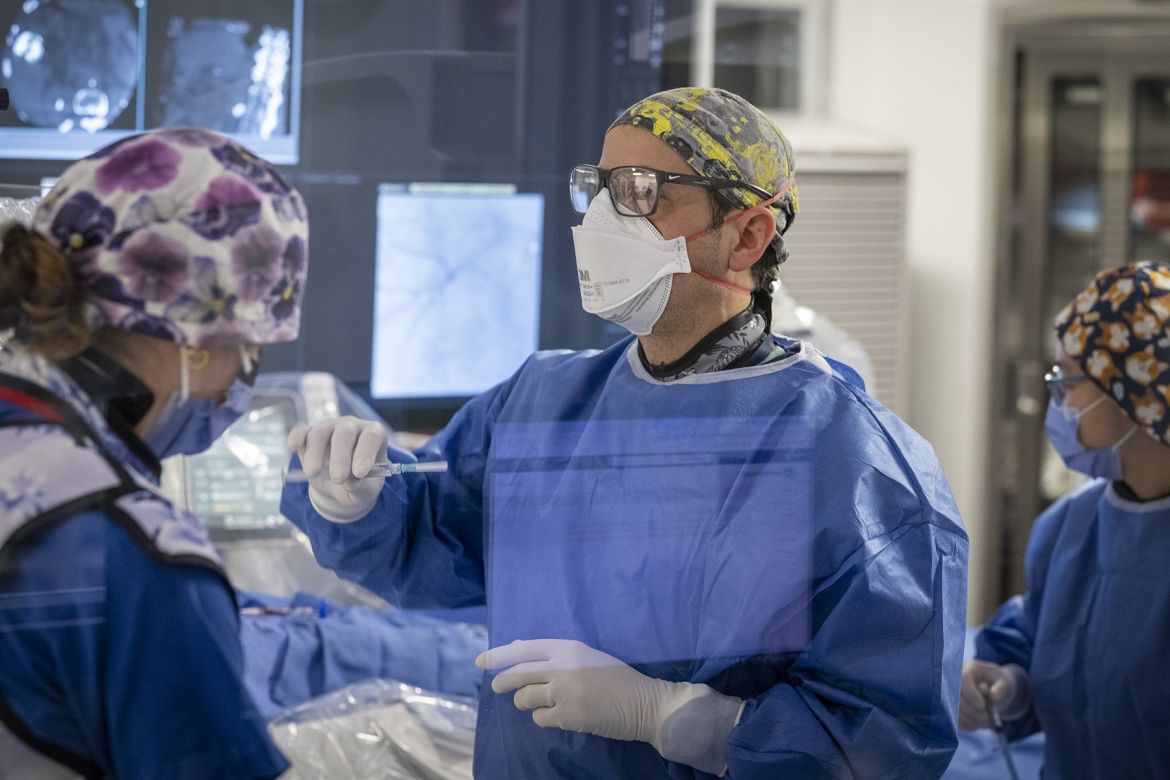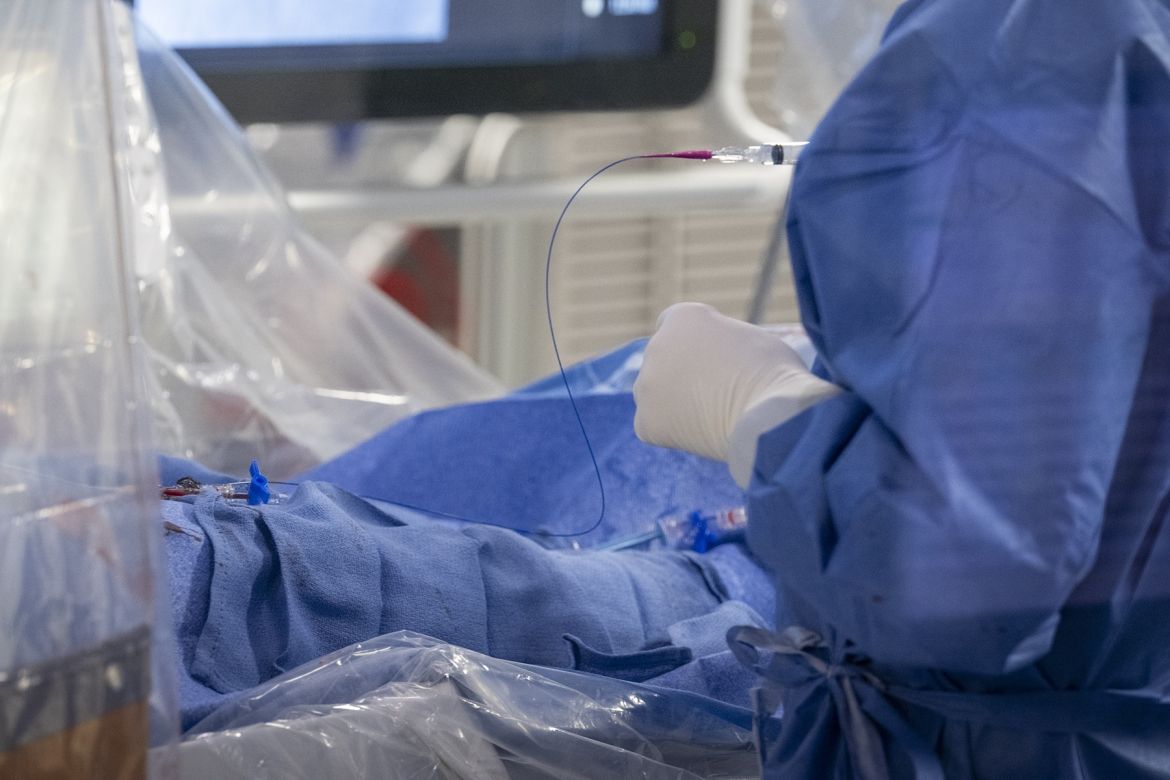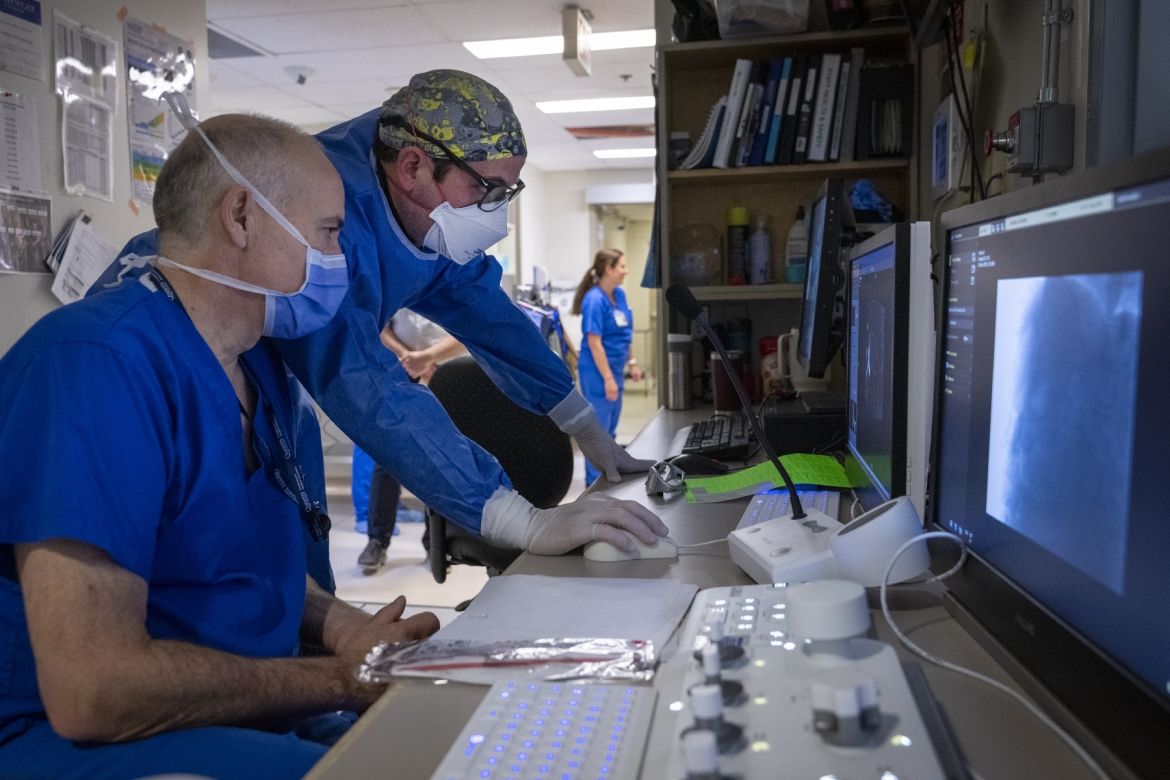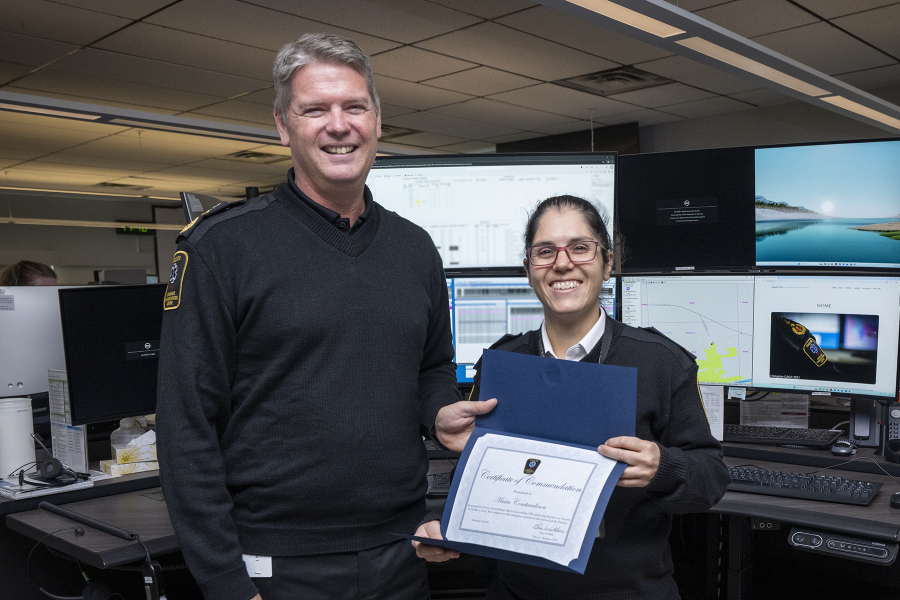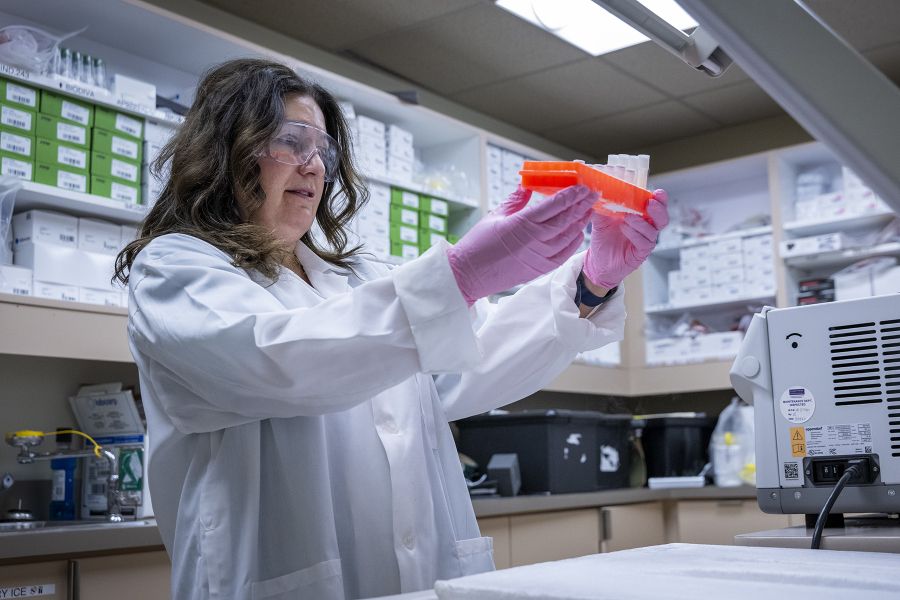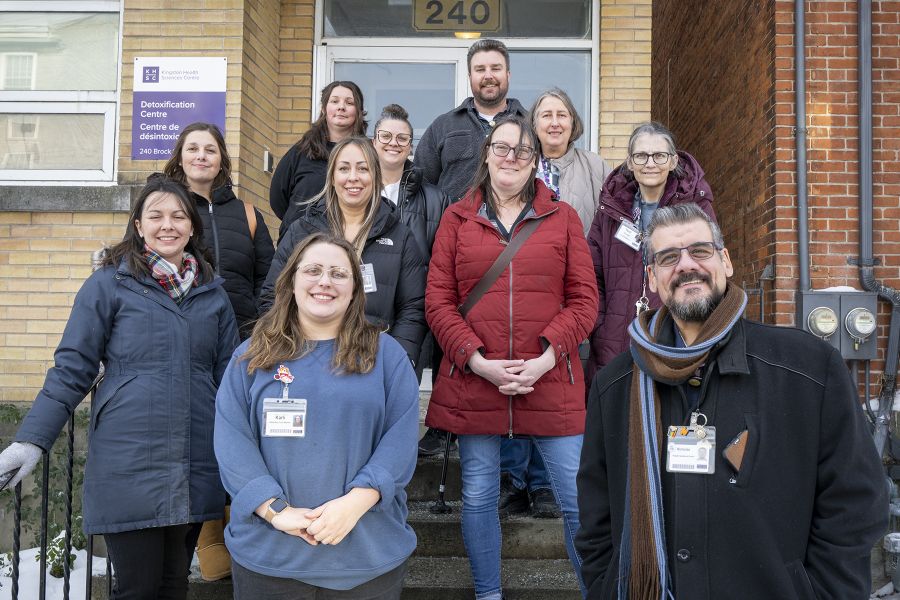Effective immediately masking is required for everyone when present on all inpatient units, in the Emergency Department (ED), the Urgent Care Centre (UCC), and the Children’s Outpatient Centre (COPC).
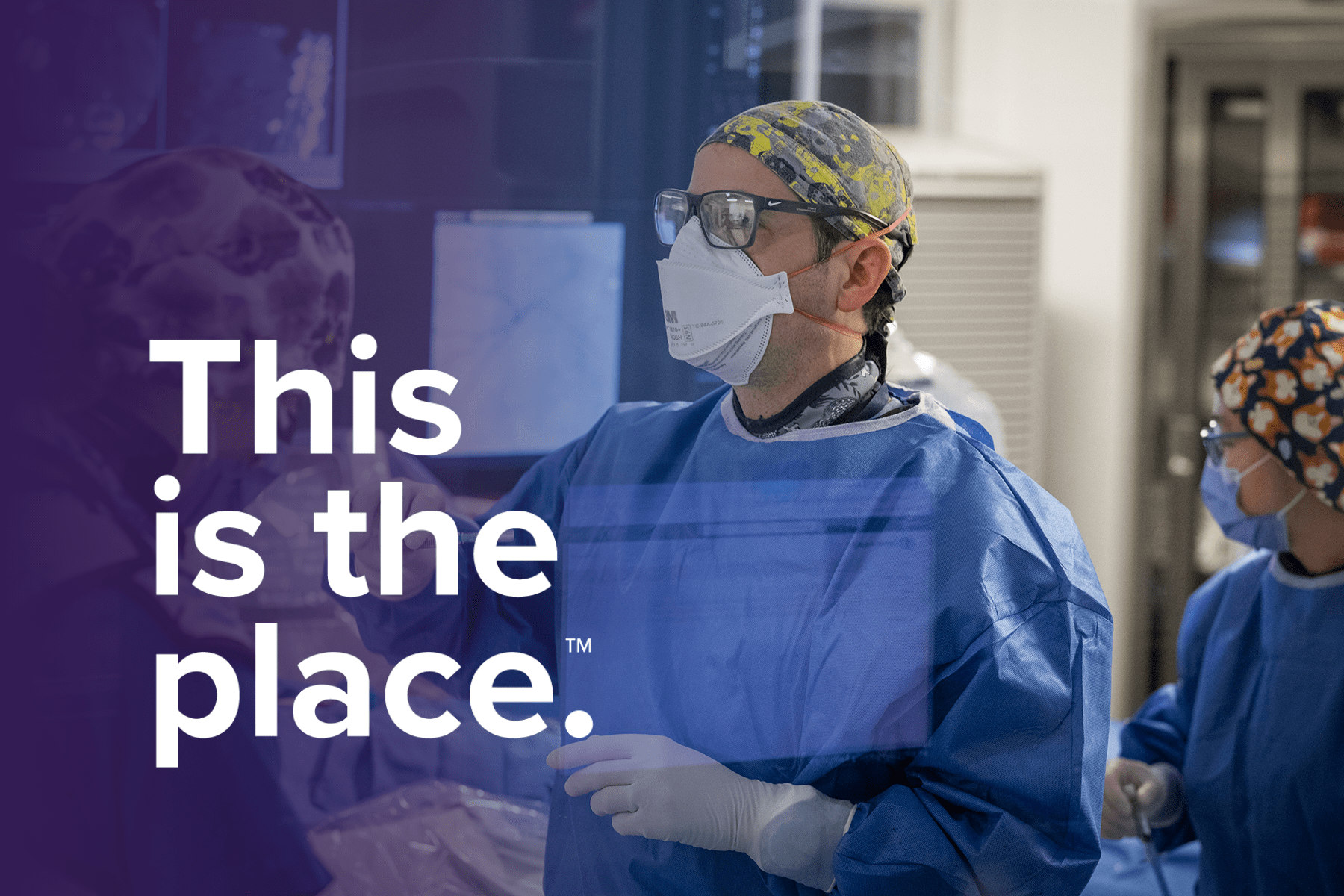
Kingston Health Sciences Centre (KHSC) is now home to one of the most advanced treatments for liver cancer in Canada. Named after the radioactive isotope it uses, Yttrium-90, (Y-90) it’s a minimally invasive procedure that precisely delivers a knockout blow to tumors from within.
Y-90 therapy uses advanced image guidance to navigate a catheter through the patient’s arteries to place microscopic radioactive glass beads, smaller than the diameter of human hair, directly inside tumors. The beads then emit radiation, killing the cancer cells from the inside while preserving nearby healthy tissue.
Y-90 matters because it has the ability to cure, convert and control cancers. Firstly, it can be used to cure certain types of liver cancer. It can also ‘convert’ by shrinking tumors down to a size where surgery becomes a curative option. If curative intent is not an option, it can control cancer, giving patients precious time.
- Dr. Emidio Tarulli
Compared to surgery or conventional external radiation therapy, Y-90 has fewer side-effects and faster recovery. It’s performed over two outpatient appointments, so patients can go home at the end of the day.

“We were frequently identifying patients who could benefit from this therapy but were unable to travel out of the region due to their condition,” says Tarulli. “This is the Interventional Radiology and Nuclear Medicine teams at KHSC stepping up to deliver an international standard of liver cancer care in Kingston.”
The Y-90 program fills an important gap in liver cancer treatments, giving patients in the southeastern Ontario region access to this kind of personalized care, making KHSC one of the earliest of adopters in Canada.
Precision treatment requires teamwork
Y-90 treatment requires absolute precision. The radioactive beads, or “microspheres,” are each around 15-25 micrometres in diameter. Between 1.2 -8 million beads fit inside a treatment vial and, while that sounds like a lot, it’s usually smaller than the measurement of a teaspoon. It’s the size of the beads that allows for a level of precision that keeps nearby organs safe and preserves more healthy liver tissue compared to surgery or conventional radiation.
On the first visit, a mapping angiogram is performed in an Interventional Radiology (IVR) suite, which is then followed by a nuclear medicine scan which allows the team to create a personalized treatment plan for each patient.
During the second visit, the treatment is delivered in IVR followed by another nuclear medicine scan to confirm the dose reached the tumor.
The Y-90 team consists of over 40 staff across multiple departments, and the entire process takes weeks of planning for something that has a delivery window of only a few hours. Everyone from the scheduling clerks and patient navigators to the medical radiation technologists plays a part in making sure the process goes smoothly.
“The logistical challenge is a big part of the accomplishment here,” says Tarulli. “The multiple timed appointments to deliver the customized dose to each patient at the right time requires a massive, coordinated effort between our IVR, Computed Tomography (CT) and Nuclear Medicine departments. We’ve been able to treat more patients than anticipated since starting the program because our teams are so well integrated.”
What Y-90 means for patients
The Y-90 program has treated eight patients since Sept. 2024. There’s a follow-up appointment at six weeks and three months and, by that point, clinicians can usually see effects on the tumor.
"Things are going well at this point,” says Tarulli. “We're starting to see results for patients, and they look good.”
John, one of the first patients to receive Y-90 at KHSC, says getting the treatment close to home made a big difference.
In 2017, he had surgery and interventional radiology to treat a liver tumour. A year later, doctors found a lesion in his lung. He started immunotherapy, and by the end of 2018, there was no sign of cancer.
But in November 2024, another mass appeared in his liver. This time, Dr. Tarulli said he was a good candidate for Y-90.
“The other option was to go for surgery, but there were concerns over bleeding and other complications. When you’re there you just have to put your faith in the experts.”
Compared to the other treatments, it was nothing. I didn’t experience any pain.
Over the years, John has worked with many care teams and acknowledged that having to travel to another hospital would have made things harder.
“We’re lucky to be able to get this care here, and the team has been one hundred percent excellent,” says John. “Dr. Tarulli has called me to follow up multiple times, and that doesn’t happen everywhere.”
When asked how he felt about being one of the first to get Y-90 at KHSC, he said simply: “I feel pretty lucky.”





